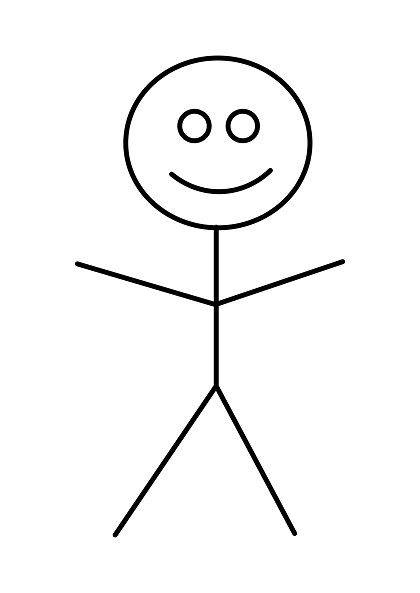Have you ever drawn a self portrait? Give it a try. Take a selfie with your phone, take a pencil and eraser and sit down to draw a picture of your own face.
Autists will find that they are quite good at it. Some are able to draw a self-portrait that is easily recognizable. My only self portrait turned out so good that people could see that I was looking more serious than usual. Something that I found remarkable because I couldn’t recognize that facial expression myself.
Neurotypicals will find that they can’t draw at all. They draw a circle with two points for eyes, a vertical stripe for the nose and a horizontal stripe for the mouth. Some draw some lines for the hair or draw circles for the eyes. But they don’t get any further than that. Obviously a face, but it doesn’t look like their face.
This scheme of a face is called symbolic thinking. Psychologists used to think about thirty years ago that this was the basis of the language ability as neurotypicals develop. In their brains, neurotypicals would have a symbol for every concept they know. When they talk they would convert those symbols into words. When they were drawing they would convert the symbols into these kinds of schemes.
But recently cat scans have shown that children are already thinking about language forms months before the start talking. This makes it clear that neurotypical children have an innate language center in their brains.
Neurotypicals have an extremely poor memory for pictures. How bad becomes clear when you look at music notation. A staff consists of five lines and each note is represented by a ball. When people learn to read music, they translate those notes into letters. Each key on a piano corresponds to a letter. Why? Because neurotypicals can’t remember that simple picture, consisting of five lines plus a ball, long enough to find the corresponding key. Neurotypicals can remember the picture just long enough to translate it to the letter.
The fact that neurotypicals are able to recognize the letters at all is because they practiced it for months at the age of six months.
The way neurotypicals draw faces is likely determined by the story they tell themselves. A face is round, has two eyes, a nose and a mouth. That is exactly the order in which they draw the parts.
Neurotypicals can indeed learn to draw or paint well. But for this it is necessary that they take years of courses led by people who can teach them the techniques.
Is it possible that autism is just a natural variation of the human condition?
Which brings me to the question who made the rock painting in the Lascaux caves? Neurotypicals can learn to make these kinds of paintings. But 10,000 to 15,000 years ago there were no painting courses. Neanderthals made rock paintings, but they were extinct 15,000 ago. Autists can naturally make these kinds of paintings very easily.
In the 1970s, the best carpenters in the Netherlands were known for being surly; they never laughed and spoke little. These are autists through and through. They were the best carpenters in the Netherlands because their companies never ran into losses. While neurotypical carpentry businesses went bankrupt within ten years, autistics could bequeath their businesses to their children after forty or fifty years.
So I wonder. Could it be possible that autism is not a disability. But that variations in brain function, like variations in skin color, variations in sexual preference, and variations in gender identity, are simply a natural variation of the human condition?
